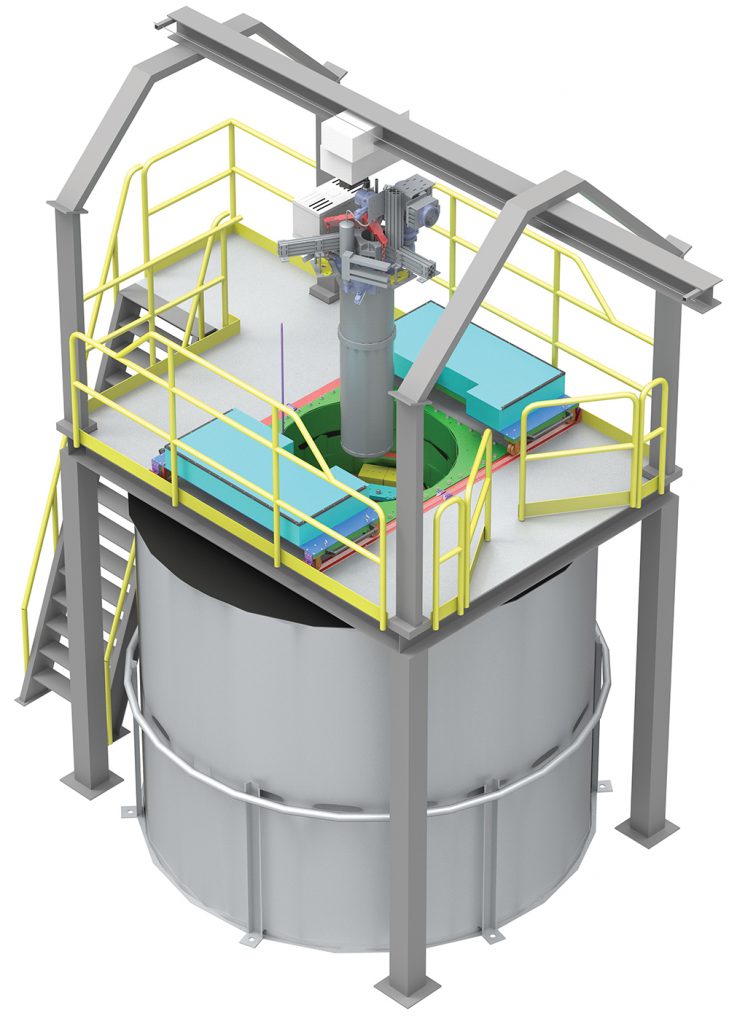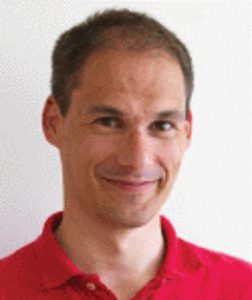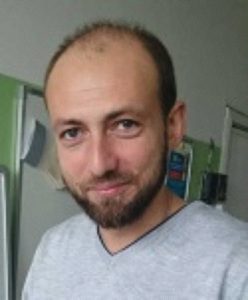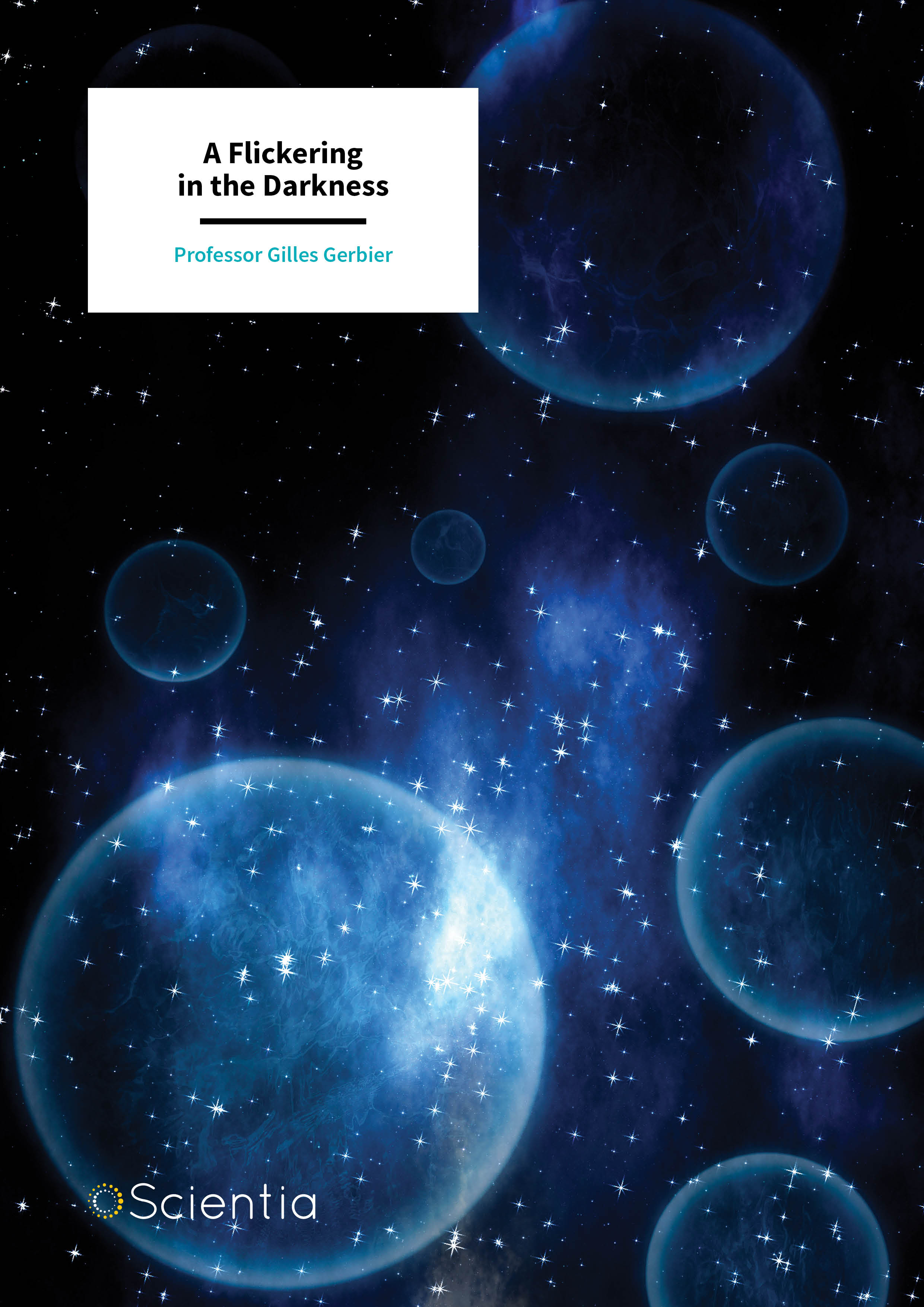Professor Gilles Gerbier – A Flickering in the Darkness
Deep, deep underground, surrounded by kilometres of solid rock, a team of scientists led by Professor Gilles Gerbier of Queen’s University, Canada, watches for a miniscule flicker of energy. A flicker that will, they hope, betray the existence of the most elusive particle known to humankind – dark matter.
It is a humbling feeling to look up into the sky at night, when thousands of stars seem to coat the sky with a curtain of light. Bring out a telescope and it becomes even more impressive, with millions of stars springing into view wherever you look. Yet for all the splendour of the sky at night, it is but a tiny fraction of what is really out there. Less than 20% of the Universe’s mass is found within the safe, comforting world of stars and planets. The rest is… something else. Something we have not detected yet, but that leaves traces in our familiar world. It is known as dark matter, and it is one of the last great enigmas of modern physics.
The obvious question here is – if you have not detected it, how do you know it is there? In a nutshell, we cannot see dark matter but we can see the gravitational shadow it casts on everything else. Early astrophysicists noted that galaxies were spinning faster than was theoretically possible, and the gravity of visible stars would not be enough to hold each galaxy together. Therefore, entire galaxies should be disintegrating at a tremendous speed. As exploding galaxies are fairly rare, there was clearly some other source of gravity that was holding everything together. This mysterious substance was dubbed dark matter.
 There have been many hypotheses regarding the identity of dark matter and they have spawned an alphabet-spaghetti worth of acronyms. The current favourite is known as a WIMP, or Weakly Interacting Massive Particle – a new form of subatomic particle that can interact through gravity and hopefully a miniscule amount of something else. This property means that a WIMP could theoretically pass right through the planet without leaving a trace – something that, naturally enough, makes it difficult to detect.
There have been many hypotheses regarding the identity of dark matter and they have spawned an alphabet-spaghetti worth of acronyms. The current favourite is known as a WIMP, or Weakly Interacting Massive Particle – a new form of subatomic particle that can interact through gravity and hopefully a miniscule amount of something else. This property means that a WIMP could theoretically pass right through the planet without leaving a trace – something that, naturally enough, makes it difficult to detect.
Efforts have been made, of course, to detect it in underground labs around the world, and to tentatively ‘make’ it in the Large Hadron Collider. Many of these attempts have focused on ‘heavy’ dark matter – particles with masses close to what popular theories would predict. However, none of these have been successful, and dark matter has remained as elusive as ever. Fortunately, physicists are nothing if not optimistic, and so they soon turned their attention to alternatives, one of these being ‘light’ dark matter. Unfortunately, the detectors that have already been built are designed to search for WIMPs, and few have the sensitivity to detect the smaller, less-massive WIMPs that are proposed.
The Noble Charge
So how do you actually detect light dark matter, given that it is essentially invisible to our instruments? This is the challenge ahead of an international collaboration headed by Professor Gilles Gerbier, holder of the Canada Excellence Research Chair in Particle Astrophysics at Queen’s University. The research team is running two projects, the first of which is known as NEWS-G (New Experiments With Spheres – Gas), one of the most promising experiments to detect low-mass WIMPs. Developed by collaboration member Dr Giomataris, the equipment in use in NEWS-G is known as a Spherical Proportional Counter, or SPC. At its most basic, the SPC is a large metallic vessel filled with a noble gas (think Helium, Neon, etc) with a sensor at the centre.
Every so often, a weakly-interacting particle (such as the proposed dark matter particle) will come screaming through the vessel and smack directly into one of the atomic nuclei of the noble gas. This impact will knock electrons out of orbit around the nucleus and allow them to move freely through the detector. As electrons are charged, they will be attracted to the high-voltage central sensor and will therefore drift in towards the middle of the vessel. As they get closer and closer, the electric field acting on them will get stronger and stronger – which in turn lets them move faster and faster. The high-speed electrons will bounce off a number of other atoms at this point, in turn booting out more electrons and creating an avalanche of charged particles. These particles find their way to the central sensor, creating a measurable electrical current.
The team’s other project is known as CUTE (Cryogenic Underground Test facility), which looks for intermediate-mass WIMPs. A Canadian led project within a large North American collaboration, CUTE uses a dilution refrigerator as its main tool. The way to track dark matter here is to operate solid crystals of Germanium brought to temperature close to absolute zero (−273.15°C), thanks to the cryostat, or dilution fridge. At this freezing temperature, miniscule energy deposits expected from dark matter particles induce tiny but measurable elevations of temperature of the crystal.
The combination of NEWS-G and CUTE detectors enlarges the range of explored masses, maximising the chances of finding the mysterious particles.

Hiding from the Background
One of the greatest challenges with this approach is that the research team’s detectors are simply too sensitive. The world around us is awash with radiation coming from many different sources – a background level that is enough to flood out the rare dark-matter-related events. Thus, any successful detector needs to block out as much of the background radiation as possible in order to provide a clean signal. How is this possible? Well, it’s not an easy process.
First, the researchers needed to find a location that is as free from background radiation as humanly possible. A major source of noise are so-called cosmic rays – high-energy radiation from outer space that hits our atmosphere, causing a burst of secondary radiation. As cosmic rays are, by definition, coming from above, the best way to avoid them is to go down, deep into the earth.
The SNOLAB is a perfect example of this. A specially-built laboratory for sensitive experiments such as these, the SNOLAB was built in a part of the Vale Creighton nickel mine – a sprawling network of mining tunnels located in Ontario, Canada. Burrowing deep into the earth, the tunnel system allows the SNOLAB to be positioned under two kilometres of solid rock. This impressive depth makes the SNOLAB the second-deepest laboratory of its kind in the world. The exceptional protection against cosmic radiation allows it to host a number of experiments searching for neutrinos and dark matter, both of which require extremely sensitive equipment and extremely low background radiation.

Second, the research team needed to shield their apparatus from further radiation. Rock is often slightly radioactive, and the radon gas that accumulates in closed environments such as mines is even more so. Even each one of you reading these lines is slightly radioactive: remember Carbon-14! The team’s equipment thus uses multiple layers of protection. The most noticeable is the first layer, made of ‘archaeological lead’, which is taken from ancient sources. Freshly-smelted lead is slightly radioactive, due to the presence of a natural lead isotope, but this isotope decays with a half-life of decades. By taking old lead, say from a Roman shipwreck, you have a source of radioactivity-free metal to use as shielding.
Despite all of this effort, some background radiation does manage to make its way to the equipment. Therefore, the researchers needed to develop a technique to discriminate between a background signal and a true dark-matter signal. Thankfully, the two will tend to occur in different regions – a background signal will begin closer to the surface of the NEWG-G gas-filled vessel, while a dark-matter interaction will occur anywhere. This leads to a difference in the time it takes for an electron to reach the central sensor, which in turn allows the team to discard false signals.

Sensing the Dark
The radiation shielding and signal cascade effect means that the detector is able to detect the presence of a single electron – an incredibly miniscule amount. For comparison, a single second of current flow at 1 ampere (the typical charging current for most cell phones) involves the transfer of about 6,250,000,000,000,000,000 electrons – a, well, slightly higher number.
The choice of noble gas for the NEWS-G vessel also allows the detector to be tuned for certain particles. The lower mass of atoms such as Helium means that the tiny bit of energy imparted by dark matter has a much larger effect. Trying the same experiment with multiple gases will let the team identify which signals are background noise and which are truly coming from dark matter.
Initial studies with a prototype detector have already borne fruit for the collaboration, with the early work setting new constraints on the properties of very light WIMPs. The next generation detector, with a larger volume and better background radiation control, is set to be installed by the summer of 2019.
These projects are complex and involve the many different competencies available to the NEWS-G and CUTE collaborations. This combination of skill sets provides the team with instrumental set-ups of exceptional quality.
What will they detect? We cannot say. But we can say that the low background and unprecedented sensitivity of the NEWS-G and CUTE detectors will give Professor Gerbier and his international team an excellent basis for hunting the ever-elusive dark matter.
Meet the researchers at Queen’s

Professor Gilles Gerbier
Professor Gilles Gerbier obtained his PhD at Université Paris XI (France) for his study of neutrino interactions in bubble chambers in 1983. He then completed a postdoctoral fellowship at the University of California, Berkeley, and later became team leader of the Beijing-Paris-Rome-Saclay Collaboration. He is now a world leader in the field of dark matter research and has been a professor in the Physics Department at Queen’s University at Kingston since 2014. He also holds the Canada Excellence Research Chair in Astro-Particle Physics for his contributions to dark matter research.

Dr Philippe Gros
Dr Philippe Gros obtained his PhD at the Lund University (Sweden) in 2011 and then worked on gaseous detectors for detection of hadrons, electrons and photons in Switzerland, Denmark, Sweden, Japan and France. He joined the NEWS-G experiment in October 2017 as a research scientist where his main focus is performing characterisation measurements in the Queen’s laboratory to prepare the SNOLAB scientific runs and coordinating operations at Queen’s lab and SNOLAB.

Dr Quentin Arnaud
Dr Quentin Arnaud completed his PhD in France within the EDELWEISS collaboration (Direct dark matter searches using HP-Ge crystals). He joined the NEWS-G experiment at Queen’s in early 2016 as a postdoctoral fellow. He has been leading the analysis of the first WIMP search data taken with a SPC prototype operated at Laboratoire Souterrain de Modane, allowing NEWS-G to obtain a world leading sensitivity at low mass. He is now focusing on lab activities and simulations to optimise the understanding and performance of SPCs.

Dr Serge Nagorny
Dr Serge Nagorny received his PhD from the Kiev Institute for Nuclear Research in 2011, and then worked on the CUPID-0 project at Gran Sasso Underground Laboratory (Italy), taking care of development, production, operations of the low-background enriched Zn82Se scintillating crystals. He joined the CUTE team at Queen’s University in early 2018 as a postdoctoral fellow. His main activities include coordinating scientific operations of the CUTE facility and developing new detectors.

Marie Vidal
Marie Vidal is a PhD candidate whose project is related to the detection of the Coherent Elastic Neutrino-Nucleus Scattering (CEνNS) using a gaseous detector close to a nuclear power plant. She completed her Master’s degree at the Universite Pierre et Marie Curie in France and then joined the NEWS-G team in September 2017. Her work is to estimate the feasibility of such an experiment. She is also involved in taking quenching factor measurements at TUNL.

Francisco Vazquez De Sola Fernandez
Francisco Vazquez De Sola Fernandez is a PhD student who joined the NEWS-G team in early 2015 after a Master’s degree at the University of Cambridge, England. His focus has been mostly on data analysis, especially on understanding the pulse shape of events for better characterisation. He is now working on extracting a limit on solar KK axions, another form of Dark Matter, using the data from the 60 cm NEWS-G detector in the Laboratoire Souterrain de Modane.

Alexis Brossard
Alexis Brossard is a PhD candidate working on the NEWS-G experiment. He completed his Master’s degree in France at the University of Strasbourg in 2014. His work has involved creating radioactive background simulations in order to understand data acquired with detectors in underground laboratories. He is also involved in building detector hardware, especially the design of the sensor to optimise detector response.

Daniel Durnford
Daniel Durnford is a Master’s student who did his undergraduate degree at the University of Alberta, Canada, including work on the PICO and SNO+ experiments. His work at NEWS-G since September 2016 has centered primarily on exploring new calibration strategies for the detectors. He is also studying a new simulation method for very low numbers of electron signals and is setting up a likelihood analysis framework for the upcoming project at SNOLAB.






